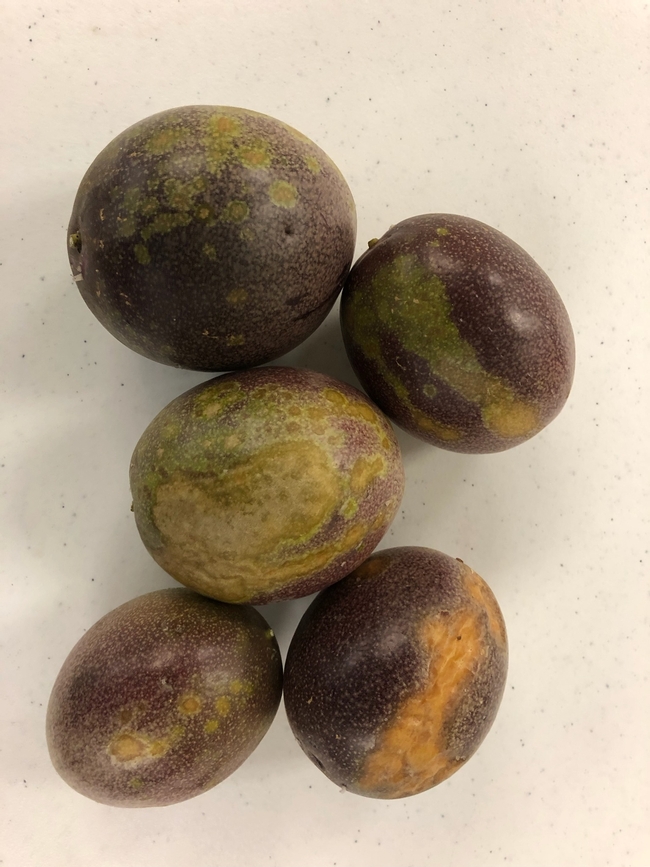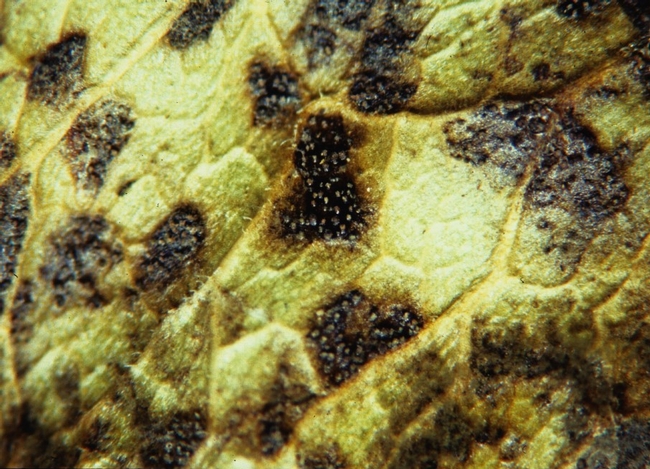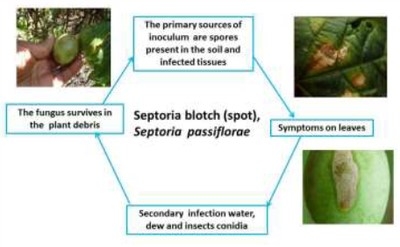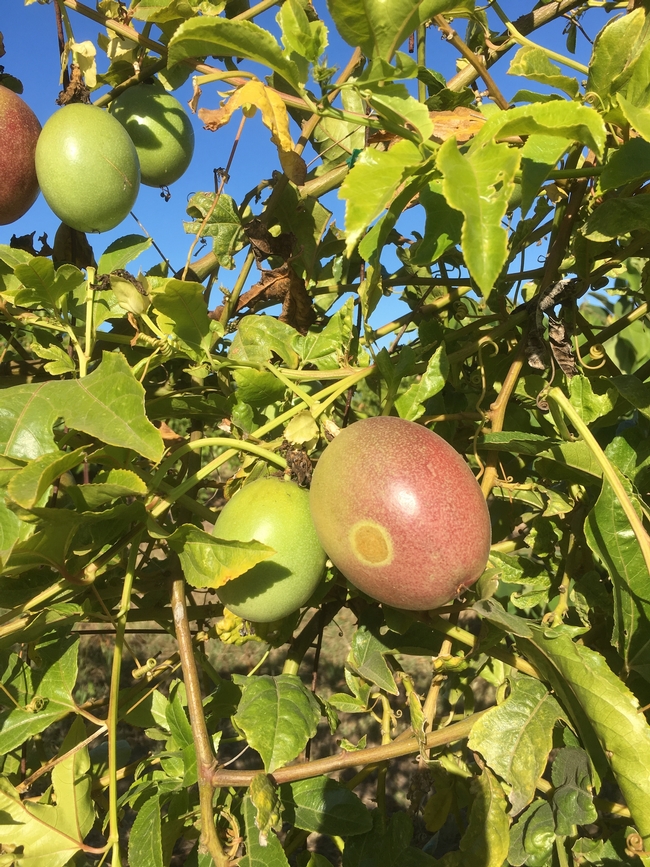Passion fruit is widely grown and valued throughout the tropics and subtropics. Most Passifloras are vines which can climb to 20 or 30 feet. The fruit varies in color from purple to yellow-orange and in shape from an egg to a tennis ball. Inside its quarter-inch protective rind are numerous small seeds covered by a juicy aromatic, sweet-acidic pulp. The sweeter species are esteemed as a fresh fruit. The seeds are consumed with the pulp. The fruit is more commonly made into juice and often blended with other juices such as orange. The fruit also is used to make excellent ice creams, sherbets, jellies, and pies. The downside of the passion fruit is that most esteemed species are very frost tender. The best adapted to California of the subtropical species, the purple granadilla (P. edulis), is prone to a fusarium soil disease. However, there is a yellow form which, though not as sweet, is not subject to this disease. More importantly, the yellow form can be hybridized with the purple or used as a rootstock. The crop grows mainly along the coast where it enjoys the mild weather.
The purple ‘Frederick' variety is probably the most widely grown commercial variety in California. It's great tasting, and I've been known to suck the delicious innards of 15 fruit at a sitting. Aside from fusarium wilt, it has few pests or diseases. That was until this fall when fruit spotting started showing up on fruit and leaves. The cause is a fungus – Septoria spp. – which thrives in cool, moist conditions. These were exactly what we had this year. All summer long, there was fog along the coast, and this is what the fungus enjoys. It colonizes leaves, defoliating the plant and spreading to the fruit, causing Septoria Blotch (Spot). Once infected there's not much that can be done, other than preventing further spread to the rest of the vineyard.
Photo: Fruit Blotch
Fungal structures (pycnidia) growing on leaf, causing scarring spots
Disease symptoms:
- Leaves are the most affected organs, showing light brown slightly round necrotic spots normally encircled by a chlorotic halo. A single lesion per leaf is sufficient to cause abscission, and even leaves without visible symptoms may fall prematurely.
- When the disease reaches 15-20% of leaves in the same plant, partial or even complete leaf abscission is observed. In young twigs, lesions may promote girdling leading to wilt and twig tips death.
- Lesions on flowers are similar to those on leaves. The primary infection in the calyx may reach the stalk, causing the early drop of flowers. The infection may occur at any stage of the development of the fruits, affecting maturation or development.
- Leaf and fruit abscission, twig wilt and plant death may occur under disease favoring conditions.
Treatment: Under ideal conditions and forehand knowledge!!!!
1) Rake up infected leaves on the ground and bury or compost more than 50 ft away from the vines.
2) Pick off spotted fruit and leaves and remove from field as soon as possible as spores are being produced in the lesions and can infect surrounding leaves and fruit when moisture is present.
3) During periods with dew, rain or ocean mist, spray Abound (azoxystrobin) or generic version of this fungicide on the vines. It distributes well over the foliage and fruit, is fairly rainfast, and gives about 2 weeks' protection.
4) To minimize the risk of the fungus developing resistance to Abound, apply a copper fungicide between Abound sprays, for instance Cueva (copper octanoate) is a good product and approved for organic production. Copper is a protectant and needs good coverage to be effective. It provides about 7 days of protection, possibly longer without rain.
So this year has been weird. Most years are. Lots of rain, no freezes, but it was a cold winter. Then all this fog in the summer that normally clears up going into summer. it seems like there's always something new. Had that funny scale on citrus again this year - wax scale - And the effects of fire can always bring a round of new pests. And there is always a new winter waiting for us.
Photo: Leaf and fruit spotting (blotch) from Septoria.



